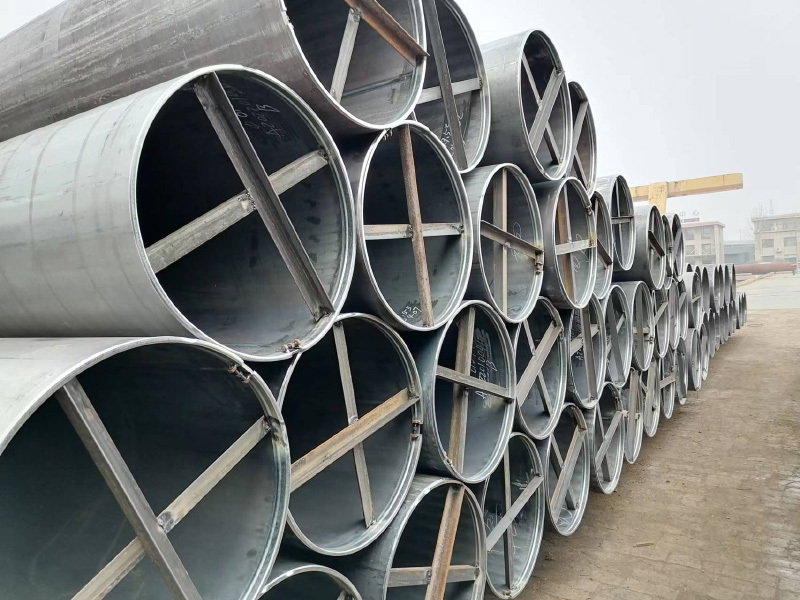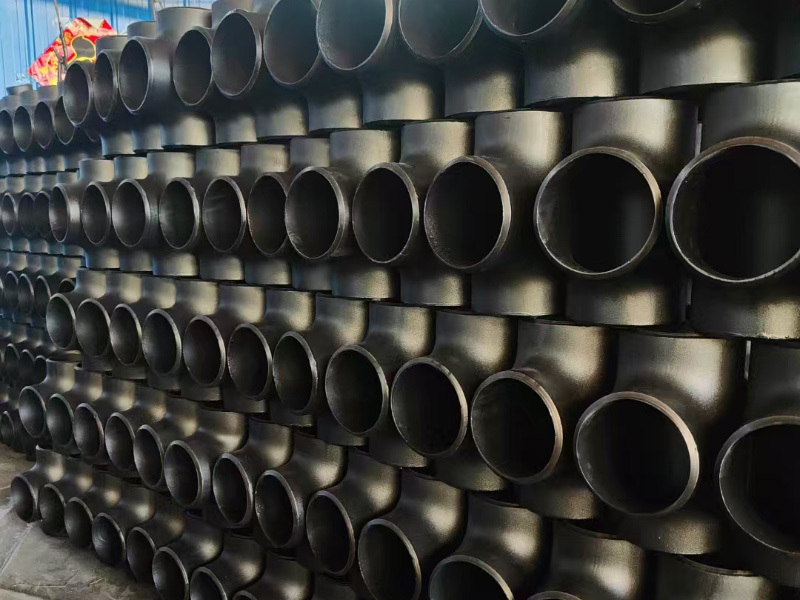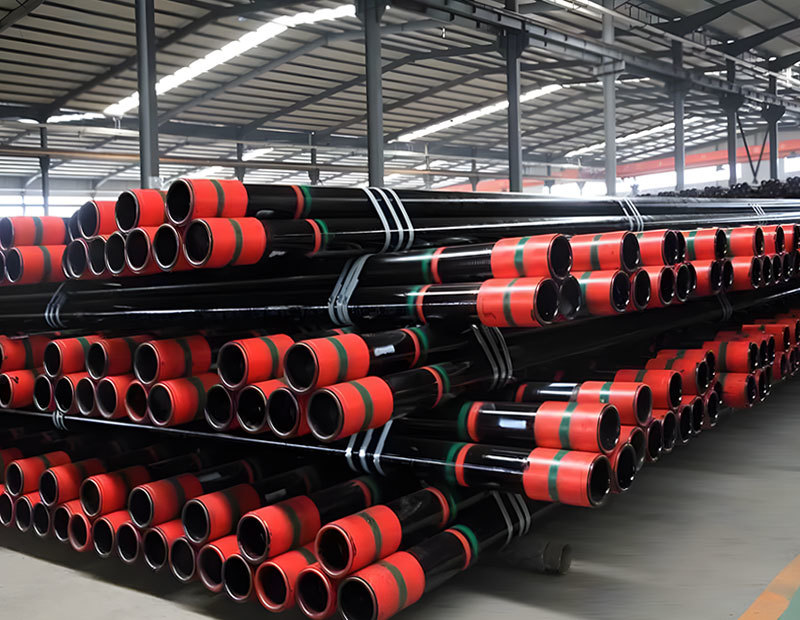Leading Smls Pipe and fittings supplier from China since 1991
Understanding API 5CT Tubing: Essential Guide for the Oil and Gas Industry
Understanding API 5CT Tubing: Essential Guide for the Oil and Gas Industry Table of Contents 1. Introduction to API 5CT Tubing 2. Specifications and Standards of API 5CT 3. Types of API 5CT Tubing 4. Applications of API 5CT Tubing in Oil and Gas 5. Manufacturing Process of API 5CT Tubing 6. Installation and Maintenance of API 5CT Tubing 7. Challenges
May 30,2025

Understanding API 5CT Tubing: Essential Guide for the Oil and Gas Industry
Table of Contents
- 1. Introduction to API 5CT Tubing
- 2. Specifications and Standards of API 5CT
- 3. Types of API 5CT Tubing
- 4. Applications of API 5CT Tubing in Oil and Gas
- 5. Manufacturing Process of API 5CT Tubing
- 6. Installation and Maintenance of API 5CT Tubing
- 7. Challenges and Solutions in API 5CT Tubing
- 8. The Future of API 5CT Tubing in the Industry
- 9. Frequently Asked Questions
- 10. Conclusion
1. Introduction to API 5CT Tubing
API 5CT tubing plays a vital role in the oil and gas industry, serving as a conduit for oil and gas extraction from deep underground. Understanding the specifications, types, and applications of API 5CT tubing is essential for industry professionals, engineers, and procurement specialists. This guide provides a comprehensive overview of API 5CT tubing, elucidating its significance and functionality in the oil and gas sector.
2. Specifications and Standards of API 5CT
API 5CT is a specification set forth by the American Petroleum Institute (API) that governs the requirements for casing and tubing used in the oil and natural gas industries. The standard ensures that materials meet specific mechanical and chemical properties, which are critical for performance and safety in high-pressure environments.
2.1 Mechanical Properties
The mechanical properties of API 5CT tubing include tensile strength, yield strength, and elongation. These properties are crucial for determining the tubing's ability to withstand the harsh conditions found in oil and gas extraction.
2.2 Chemical Composition
API 5CT tubing must adhere to stringent chemical composition requirements, including low sulfur and phosphorous content to prevent corrosion and enhance durability. This section covers the acceptable ranges for elements like carbon, manganese, and chromium, which are essential for maintaining the integrity of the tubing.
3. Types of API 5CT Tubing
API 5CT tubing comes in various grades and styles, each designed to meet specific operational requirements. The most common types of API 5CT tubing include:
3.1 H40 Tubing
H40 tubing is often used in shallow wells and has a lower yield strength compared to other grades, making it suitable for less demanding applications.
3.2 J55 Tubing
J55 tubing is frequently employed in medium-depth wells. It offers a balanced combination of strength and weight, making it a popular choice for many operations.
3.3 K55 Tubing
K55 tubing offers higher yield strength, making it ideal for deeper wells where increased pressure and temperature are prevalent.
3.4 N80 Tubing
N80 tubing is designed for sour gas environments, featuring enhanced corrosion resistance. Its rugged design suits various extraction methods, including horizontal drilling.
3.5 L80 Tubing
L80 tubing is characterized by its excellent strength and resistance to stress corrosion cracking, making it suitable for both sweet and sour service applications.
3.6 P110 Tubing
P110 tubing is designed for high-pressure environments, offering exceptional tensile strength and resistance to fatigue, thus ensuring reliability in extreme conditions.
4. Applications of API 5CT Tubing in Oil and Gas
API 5CT tubing serves various applications in the oil and gas sector. Its versatility allows it to be utilized in several contexts, including:
4.1 Oil Production
The primary application of API 5CT tubing is in oil production, where it serves as a conduit for crude oil extraction from subterranean reservoirs. Its robust design ensures that it can withstand the pressures associated with oil extraction.
4.2 Natural Gas Transmission
In addition to oil, API 5CT tubing is also used for the transmission of natural gas. Its capacity to handle varying pressures and temperatures makes it an ideal choice for gas extraction projects.
4.3 Geothermal Applications
API 5CT tubing can also be used in geothermal energy projects, where it facilitates the extraction of heat from the Earth’s crust for energy production.
4.4 Water Injection
Water injection is a common practice in oil recovery, where API 5CT tubing is used to inject water into oil reservoirs to maintain pressure and enhance oil recovery rates.
5. Manufacturing Process of API 5CT Tubing
The manufacturing process of API 5CT tubing involves several critical steps to ensure that the final product meets the required specifications and standards.
5.1 Raw Material Selection
Choosing the right raw materials is vital for producing high-quality API 5CT tubing. The materials must possess the specified chemical and mechanical properties to withstand the operational conditions.
5.2 Forming and Shaping
The selected raw materials are shaped into tubular forms through processes such as extrusion or piercing. This stage is crucial for achieving the desired dimensions and physical characteristics.
5.3 Heat Treatment
Heat treatment processes, including quenching and tempering, enhance the mechanical properties of the tubing. This step is essential for ensuring that the tubing can withstand the stresses encountered during operation.
5.4 Testing and Quality Control
Rigorous testing and quality control procedures are performed to verify that the tubing meets API 5CT specifications. This includes mechanical testing, chemical analysis, and non-destructive testing methods to ensure the integrity of the product.
6. Installation and Maintenance of API 5CT Tubing
Proper installation and maintenance of API 5CT tubing are crucial for ensuring optimal performance and longevity.
6.1 Installation Guidelines
Following established installation guidelines is essential for minimizing the risk of failure. This includes ensuring proper alignment, using the appropriate tools, and following torque specifications during installation.
6.2 Regular Maintenance Practices
Regular maintenance practices, including inspections and pressure testing, help identify potential issues before they escalate. This proactive approach ensures the tubing operates efficiently and safely.
7. Challenges and Solutions in API 5CT Tubing
Despite its robust design and performance capabilities, API 5CT tubing faces several challenges in the field. Addressing these challenges is vital for ensuring operational efficiency.
7.1 Corrosion Risks
Corrosion can significantly impact the lifespan of API 5CT tubing. Implementing corrosion-resistant coatings and materials can mitigate this risk.
7.2 Mechanical Failures
Mechanical failures due to fatigue, stress, or improper installation can lead to costly downtime. Employing strict quality control measures and regular maintenance can help reduce these occurrences.
8. The Future of API 5CT Tubing in the Industry
The future of API 5CT tubing is set to evolve with advancements in technology and practices within the oil and gas industry.
8.1 Innovations in Materials
Research and development in materials science may lead to the creation of stronger, lighter, and more corrosion-resistant tubing, thereby improving efficiency and safety in extraction operations.
8.2 Increased Demand for Sustainable Practices
As the industry shifts toward sustainability, API 5CT tubing will need to adapt to new methods of oil and gas extraction that prioritize environmental responsibility.
9. Frequently Asked Questions
9.1 What is the primary use of API 5CT tubing?
API 5CT tubing is primarily used as a conduit for oil and gas extraction from underground reservoirs.
9.2 How does API 5CT tubing differ from other types of tubing?
API 5CT tubing is specifically designed to meet the requirements and standards set by the American Petroleum Institute for use in oil and gas applications, while other tubing types may not adhere to these rigorous standards.
9.3 What are the common grades of API 5CT tubing?
Common grades of API 5CT tubing include H40, J55, K55, N80, L80, and P110, each tailored for specific operational needs and conditions.
9.4 How is API 5CT tubing manufactured?
API 5CT tubing is manufactured through a series of processes, including raw material selection, forming and shaping, heat treatment, and thorough quality control testing.
9.5 What are the installation requirements for API 5CT tubing?
Installation requirements for API 5CT tubing include following established guidelines for alignment, using appropriate tools, and adhering to torque specifications to ensure proper fitting and functionality.
10. Conclusion
API 5CT tubing is a cornerstone of the oil and gas industry, providing the necessary infrastructure for efficient and safe extraction. Understanding its specifications, types, applications, and maintenance practices is crucial for industry professionals. As technology continues to advance, the future of API 5CT tubing will likely see innovations that enhance its performance and sustainability, ensuring its ongoing relevance in an ever-evolving industry.
Hot Tags:







